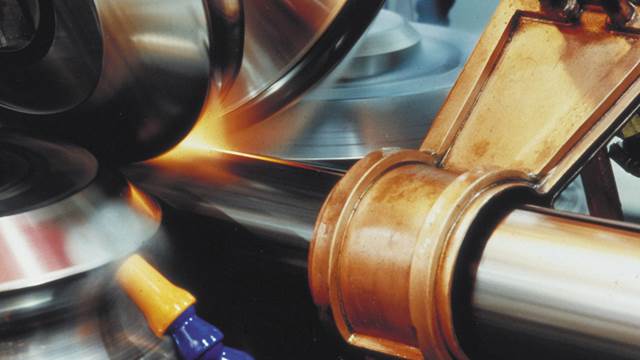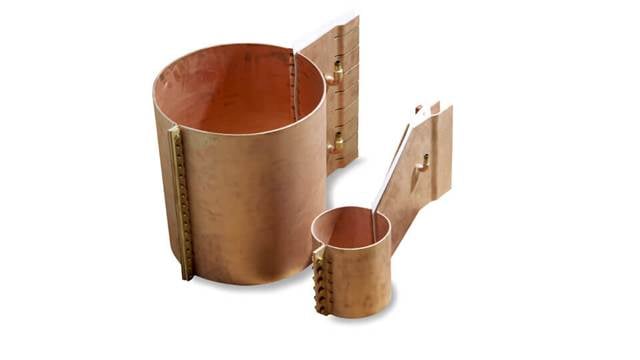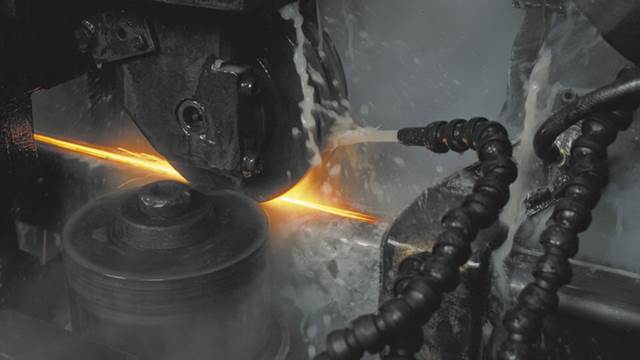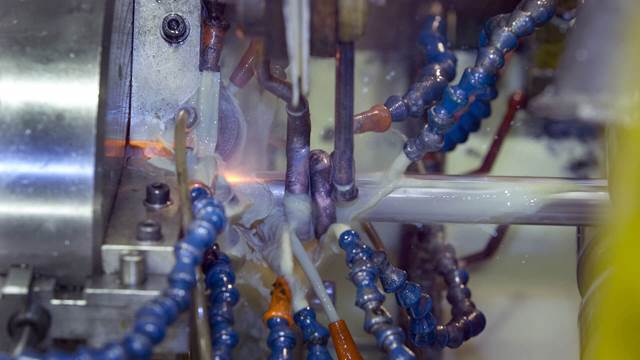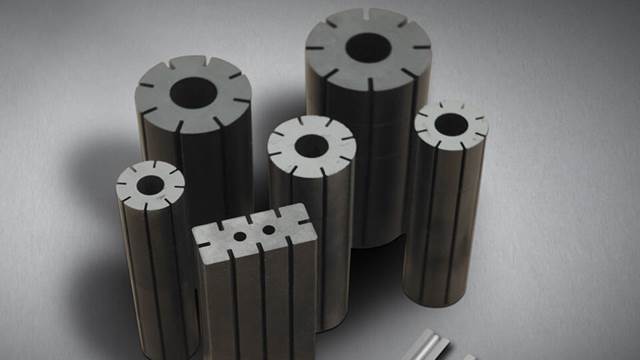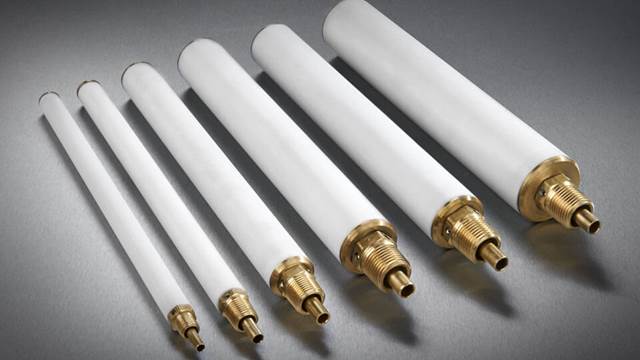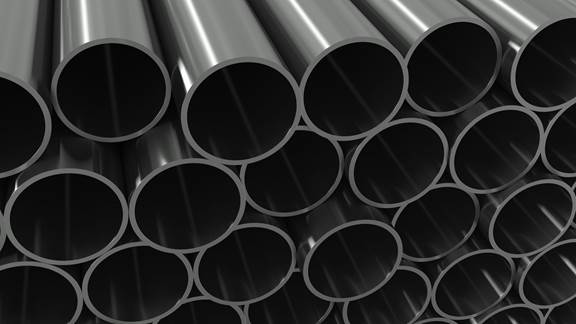
Induction welding
Induction welding is used for longitudinal welding in the tube and pipe industry.
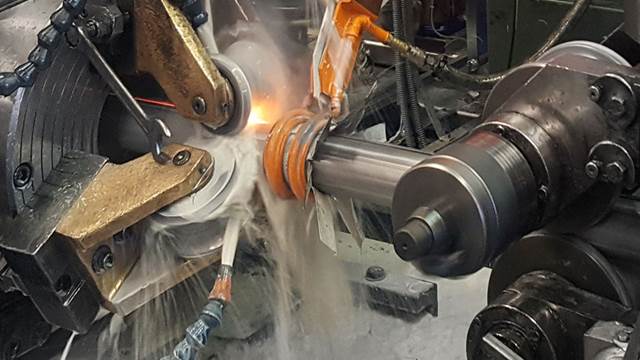
What is induction welding?
With induction welding the heat is electromagnetically induced in the workpiece. The speed and accuracy of induction welding make it ideal for edge welding of tubes and pipes. In this process, pipes pass an induction coil at high speed. As they do so, their edges are heated, then squeezed together to form a longitudinal weld seam. Induction welding is particularly suitable for high-volume production. Induction welders can also be fitted with contact heads, turning them into dual purpose welding systems.
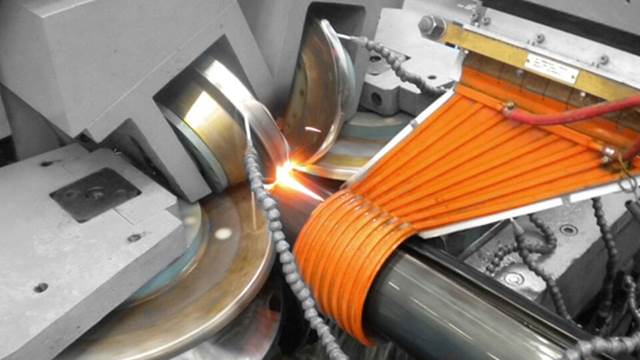
What are the benefits?
- Low power consumption and high efficiency reduce costs
- Controllability and repeatability minimise scrap
- Automatic load matching ensures full output power across a wide range of tube sizes
- Small footprint make them easy to integrate or retrofit into production lines
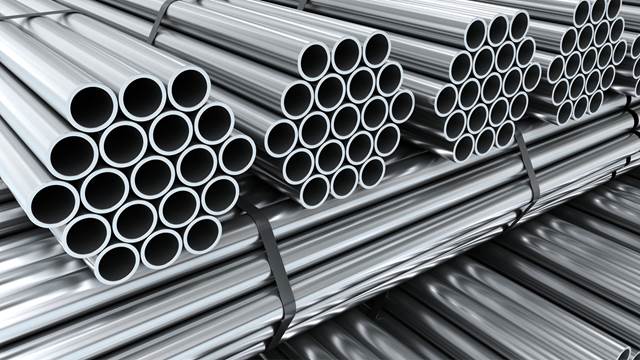
Where is it used?
Induction welding is used in the tube and pipe industry for the longitudinal welding of stainless steel (magnetic and non-magnetic), aluminium, low-carbon and high-strength low-alloy (HSLA) steels and many other conductive materials.
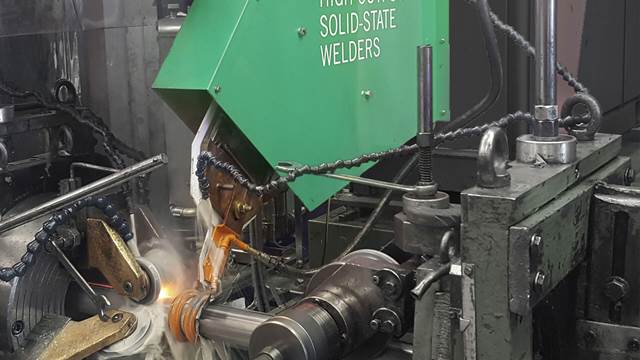
What equipment is available?
Weldac is ENRX’s system family of proven highoutput solid-state tube and pipe welders. The Weldac family covers a wide range of power sizes from 50 kW up to 2,200 kW and a frequency range
of 60-500 kHz. Silicon Carbide or Insulated Gate Bipolar Transistor inverter technology results in an impressive efficiency factor of up to 95% from the mains to the welding coil, saving energy and reducing cooling water consumption. The short-circuit-proof design ensures safe and reliable operation.
of 60-500 kHz. Silicon Carbide or Insulated Gate Bipolar Transistor inverter technology results in an impressive efficiency factor of up to 95% from the mains to the welding coil, saving energy and reducing cooling water consumption. The short-circuit-proof design ensures safe and reliable operation.
related products
related industries
